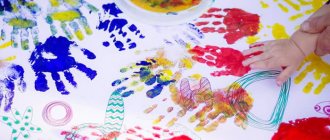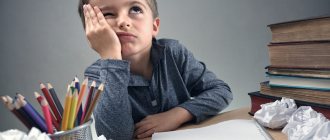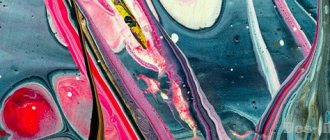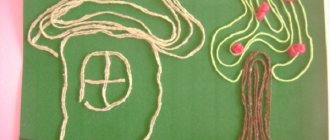Presentation of children's drawings of the senior group
Lyubov Krasko
Presentation of children's drawings of the senior group
Consultation for educators
TOPIC: Difficulties faced by teachers in working with children in visual arts
January 1, 2016 The Federal State Educational Standard for Preschool Education was adopted.
The artistic and aesthetic development of a child presupposes the development of prerequisites for the value-semantic perception and understanding of works of art and the natural world; formation of elementary ideas about types of art; music perception; fiction; implementation of independent creative activities of children.
Drawing, modeling, applique are types of visual activities whose main purpose is a figurative reflection of reality.
It is necessary to draw children's attention to the fact that art surrounds us everywhere, it gives people pleasure and joy, and it should be treated with care.
A preschooler in his aesthetic development goes from an elementary visual-sensory impression to the creation of an original image (composition)
.
Based on this, the teacher sets himself the following tasks:
— Introduce children to different types of art (painting, graphics, folk and decorative arts)
.
— Draw children’s attention to the figurative expressiveness of various objects in art, nature, and in everyday life.
— Encourage children to embody their ideas, experiences, feelings, thoughts in artistic form.
— Enrich the content of visual activities in accordance with the tasks of cognitive and social development of children.
— Teach children to select the content of a drawing , modeling, appliqué: ( “inhabit”
forest, pond, desert - with corresponding inhabitants; depict daisies and cornflowers in the meadow, and roses and asters in the garden).
— Support the desire to independently combine familiar techniques.
— To form an understanding of artistic crafts.
Older children must learn to mix paints to create new colors; use the brush easily and confidently; skillfully draw lines in different directions, in decorative drawing, create pattern elements with the entire bristle of the brush or tip.
Introduce children to drawing techniques with a simple pencil, colored crayons, and charcoal.
In sculpting, children learn to analyze the shape of an object, explain the connection between the plastic form and the method of sculpting, and master the sculptural method of sculpting and sculpting from a whole piece by pulling out parts.
In the application, children get acquainted with new ways of creating images; symmetrical cutting from folded paper; silhouette cutting along the drawn contour; overlay applique for multi-color looks; in collective work, create ornamental applications (panels, collages)
.
Drawing: “Winter Landscape”
.
Goal: To arouse interest in creating an expressive image. Improve technical skills (use a brush skillfully; draw wide lines with the entire bristle of the brush and thin lines with the end). Develop a sense of color. Reinforce what a landscape is (these are paintings that depict nature in all its beauty)
.
Drawing: “Mom’s portrait”
.
Goal: Learn to draw a female portrait, trying to convey the character and mood of a particular person. Continue acquaintance with the types and genres of fine art (portrait)
.
Application: “Still Life”
.
Goal: Improve the technique of cutting round shapes of different sizes from paper folded in half. Develop a sense of form. Learn to put cut out silhouettes on top of each other and place them higher or lower.
Application: “Flowers for Mom”
.
Lepka: “We will go, we will race on reindeer early in the morning...”
Purpose: To introduce new sculpting techniques, to show the possibility of complementing the image with different materials (horns made of wire, twigs)
.
Continue to teach how to stabilize the craft (use straws or toothpicks as a frame for the legs)
.
The difficulties I encountered were the insufficient development of fine motor skills in children. Therefore, in my work I use various exercises and finger games aimed at developing fine motor skills of the hands: “Flower”
,
“Finger Boy”
,
“Hello”
,
“Guess by Touch”
,
“Magic Bag”
, etc. I take exercises to develop visual control over hand movements, for example:
“Continue the pattern”
.
"Trace the outline
.
“Connect the dots”
, etc.
Another problem is that children are afraid to draw because they feel like they won’t succeed. To do this, it is necessary to create conditions for the artistic and aesthetic development of children. The group has a “Creativity Center”
. Together with parents, we create conditions to satisfy the child’s natural desire for creativity. There is a subject-development environment:
Colored chalk, plasticine, a set of paints, markers, pencils;
Sets with stencils for applique and drawing;
Colored and white paper, cardboard, wallpaper, paper of different tones and textures;
Stickers, fabrics, self-adhesive film;
Glue stick, cups for water, napkins for brushes. Board, easel, magnetic board;
Educational games, coloring books, illustration material.
All this helps to interest the child and set him up for creative activity.
Prepared
Senior group teacher
Krasko L.V.







